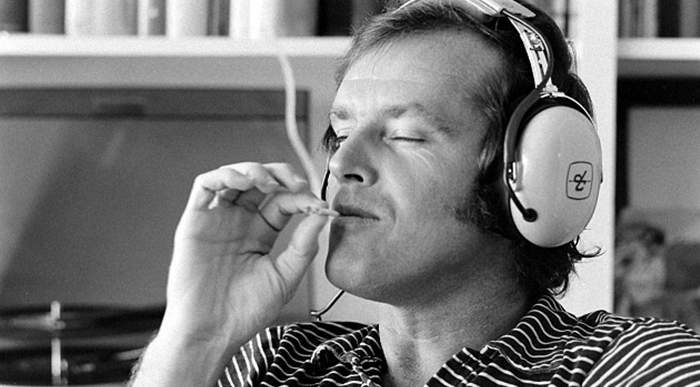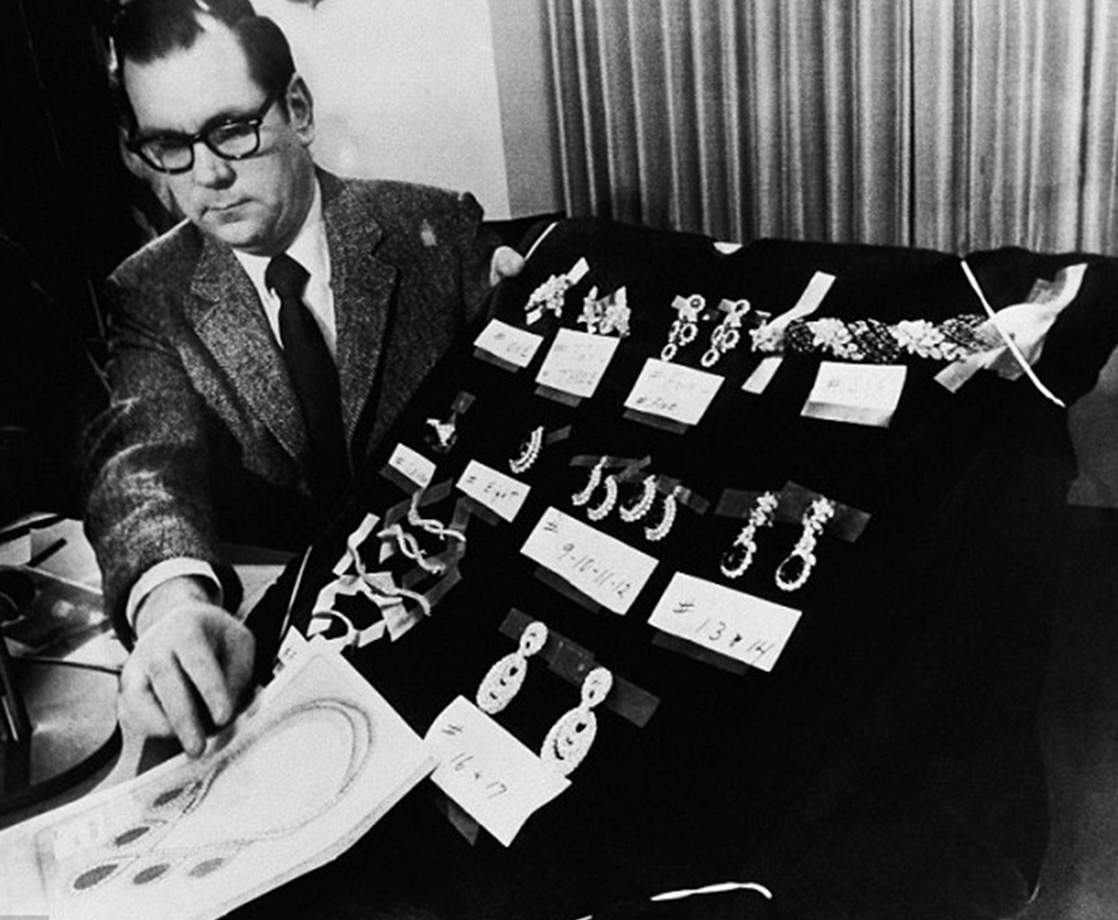Included with this article are some of my favorite songs to play on repeat while stoned. Click “play” to enjoy the experience.
I remember being in my dorm room in the early 2000s, stoned, with my buddy looking for some relaxing music to play on my laptop. “Just wait,” I said. “This is gonna be great.” I scrolled through my music library and finally settled on my favorite angry, acoustic, feminist singer at the time, Ani DiFranco.
As the angsty, twangy acoustic sounds began to emanate from the tinny speakers, I suddenly couldn’t handle it anymore. My friend and I simultaneously slammed my laptop shut. He sighed and shook his head. “Yikes. We need to get you some stoner music.” I didn’t know what he meant, but something told me my Ani days were over.
At that time in my life I was new to the ways of cannabis and it hadn’t crossed my mind that Mary Jane could affect my listening preferences. But suddenly, all I wanted to do was listen to trance-like, richly layered songs every time I got high. It was around that same time that I first started to compose my own music and I’d spend hours getting high and jamming-out in one of my college’s piano closets. (Pro-tip: Piano closets make great hot-boxes.)
There is a lot of wonderful research out there as to why music sounds different to us when we are high—and why we are able to create it more easily under the influence of cannabis. In the delightful article “The Space between the Notes: Research on Cannabis and Music Perception,” Jorg Fachner presents several reasons why this marijuana-music magic happens.
Timing
Music, like life, is all in the timing. Cannabis can monkey around with our concept of time, making us less able to integrate past, present, and future, which puts our awareness squarely in the present moment.
Fachner thinks that perhaps “stoners” prefer rhythmical and trancy soundscapes because of all the echo and reverb. Echo and reverb add a special time and space pattern to sounds, and “tripping through this frequency pattern” allows a lot of time lapses, which makes time seem even trippier yet.
Rhythm
Because there seems to be more time, cannabis users are able to hear more music between the notes, and the fabric of the song itself seems to stretch. Fachner references an article called “Dancing in Your Head,” which describes the “space between” the notes as a noise ratio relationship between information units that enables us to generate new patterns. In other words, stoners have the magic power to find music within music.
In Larry Sloman’s book Reefer Madness: The History of Marijuana in America, Dr. Munch, a physician who worked for Harry Anslinger (the former head of the U.S. narcotic control agency who claimed to have put “more jazz bands in jail than he could count”) remarked during an interview with the author: “If you are a musician you’re going to play the thing the way it is printed on a sheet. But if you’re using Marihuana, you’re going to work in about as twice as much music in-between the first note and the second note. That’s what made jazz musicians. The idea that they could jazz things up, lift them up…”
Altered Frequency Perception
A 1974 study found that sound frequency thresholds improve at 6000 Hz after cannabis intoxication, which means that stoners are more sensitive to higher sound frequencies. People in a state of stony-ness reported that they preferred these higher frequencies and noticed that they were able to perceive them more consciously than before. High frequencies are unique in that they are able to tell us special information on the spatial location of a sound source. So, cannabis is a kind of “psycho-acoustic enhancer” since it can make sounds more transparent and sound sources more recognizable.
Altered Intensity Perception
It’s been reported that cannabis users also have increased sensitivity to sound intensity thresholds. Stoners are so sensitive to sounds that an article entitled “Effects of Marihuana on Auditory Signal Detection” reported that subjects under the influence of cannabis even heard tones that weren’t there. (Ooooh! Ghost tones! Spooooky!)
Cannabis users also have an increased speech perception rate, meaning they can understand what someone is saying even when their words are covered with noise. Results were so surprising that researchers suggested giving cannabis as a medicine for hearing impaired folks.
This altered intensity effect happens because Mary Jane has the power to inhibit our hippocampal censorship mechanisms, which means she can tell the Judge Judy part of our brain to SIMMER THE FUCK DOWN. This makes it easier for music to permeate the stoned listener without judgment or criticism.
In stages of high dose cannabis intoxication, all kinds of synesthesia-like associations occur. Up to 50 percent of subjects in Charles Tart’s study “On Being Stoned” reported that sounds have a corresponding visual image and colors are synchronized with them. Kind of like a personal music video in your brain….
Brain Mapping
Fachner talks about an experiment where people were brain mapped before and after smoking a spliff while they listened (with closed eyes) to the following songs: King Crimson’s instrumental piece “Prelude,” Dogbowl’s “Obsessed,” and King Missile’s Beatles cover “We Can Work It Out.” (Not my taste, but I respect it.)
In this study, Alpha increases in parietal areas (the paired lobes at the top of the brain) showed up on the EEG during cannabis-infused music listening sessions. Intelligence studies have shown similar increased Alpha power in gifted individuals during problem-solving and are seen as indicators of an “efficient information processing strategy.” Brainiacs have their math puzzles, stoners have their music.
Cannabis and music also affect the activity of the brain’s right hemisphere, which is the part that’s supposed to serve the emotional, imaginative, and intuitive brain functions.
(An homage to my friend’s Jimmy Cliff cassette tape.)
All this brain mapping shows a hyper-focused attention on the “musical time-space,” which causes music to be perceived more effectively—and awesomely.
Put It All Together
Pot affects music in oh so many ways: It puts the user in a super receptive and hyper-focused state, it slows down time and reveals the space in between the notes, it alters how we hear frequency and intensity, and it helps us turn off that annoying critical part of our brain. All of this works together to enhance the experience of listening to and creating music.
So, get high and make your beats, write your lyrics, find your chords, play your heart out—the world needs your music now more than ever.
To learn more about this marijuana-music magic, check out Music and Altered States.
For your listening enjoyment, all these songs pass the stoner test of being multi-layered with moments of high frequencies. If you didn’t like them, get high(er) and try again.











